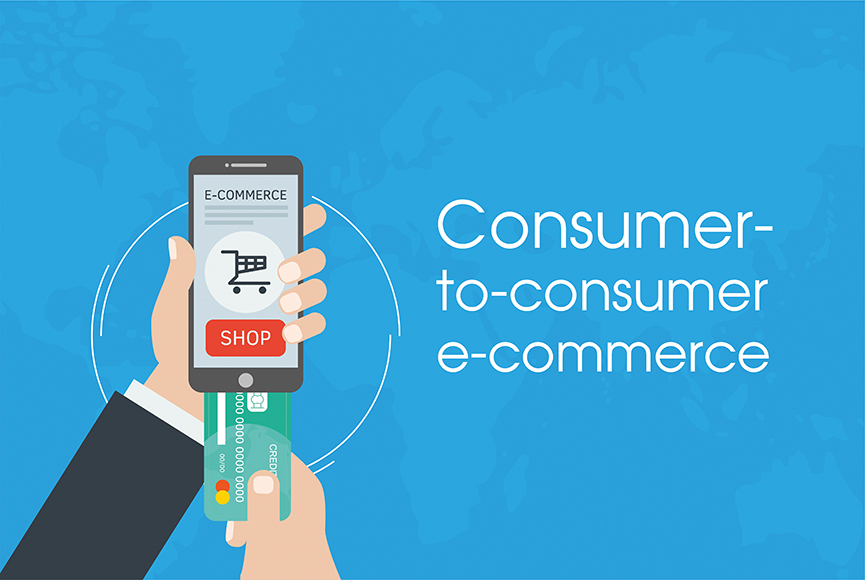E-business (electronic business) is the conduct of online business processes on the web, internet, extranet or a combination thereof. These customer-, internal- and management-focused business processes include buying and selling goods and services, servicing customers, processing payments, managing production and supply chains, collaborating with business partners, sharing information, running automated employee services and recruiting employees. If you wanted to learn more read the full article with Pritish Kumar Halder.

Cybersecurity has become ingrained in e-business with deployments of endpoint device security and advance detection and response capabilities. Security is built into browsers, and digital certificates are now available for individuals and companies from various vendors providing cybersecurity tools and technologies. Even though securing business transactions on the web remains a pressing issue for consumers and enterprises, e-business continues to grow at a healthy pace.
E-business model origins and evolution
IBM was one of the first companies to use the term e-business in October 1997, when it launched a thematic campaign to address the confusion many consumers had about internet-based businesses. The company spent approximately $500 million on an advertising and marketing campaign to show the value of the e-business model and to demonstrate that IBM had the “talent, the services and the products to help customers capture the benefits of this new way of doing business,” according to the company’s website. By 2000, IBM’s e-business revenue had grown to more than $88 billion from $64 billion in 1994, and net income had nearly tripled.
Types of e-business
Now there are actually many types of e-Businesses. It all depends on who the final consumer is. Some of the types of e-commerce are as follows :
Business-to-Business (B2B)
Transactions that take place between two organizations come under Business to business. Producers and traditional commerce wholesalers typically operate with this type of electronic commerce. Also. it greatly improves the efficiency of companies.

Business-to-Consumer (B2C)
When a consumer buys products from a seller then it is business to consumer transaction. People shopping from Flipkart, Amazon, etc is an example of business to consumer transaction. In such a transaction the final consumer himself is directly buying from the seller.

Consumer-to-Consumer (C2C)
A consumer selling product or service to another consumer is a consumer to consumer transaction. For example, people put up ads on OLX of the products that they want to sell. C2C type of transactions generally occurs for second-hand products. The website is only the facilitator not the provider of the goods or the service.

Consumer-to-Business (C2B)
In C2B there is a complete reversal of the traditional sense of exchanging goods. This type of e-commerce is very common in crowdsourcing based projects. A large number of individuals make their services or products available for purchase for companies seeking precisely these types of services or products.
Consumer-to-Administration (C2A)

The Consumer-to-Administration model encompasses all electronic transactions conducted between individuals and public administration. Some examples of applications include
Education – disseminating information, distance learning, etc.
Social Security – through the distribution of information, making payments, etc.
Taxes – filing tax returns, payments, etc.
Health – appointments, information about illnesses, payment of health services, etc.
Business-to-Administration (B2A)
This part of e-commerce encompasses all transactions conducted online by companies and public administration or the government and its varies agencies. Also, these types of services have increased considerably in recent years with investments made in e-government.
E-business vs. e-commerce
E-commerce and e-business are similar but not synonymous. E-commerce narrowly refers to buying and selling products online, whereas e-business defines a wider range of business processes, including supply chain management, electronic order processing and customer relationship management, designed to help companies operate more effectively and efficiently. E-commerce therefore should be considered a subset of e-business.

E-commerce describes any part of the business processes associated with online ordering and purchasing. An e-commerce transaction. For example, would be a customer ordering online and picking up the product at the brick-and-mortar store. By contrast, e-business processes can be handled in-house through a company’s internal network or outsourced to providers that specialize in specific parts of the transaction.
Examples of e-business
E-business encompasses older companies that digitally transformed from legacy processes to data-centric operations and newer digitally oriented companies. Since then examples of e-business organizations of different shapes and sizes have flooded the digital landscape.
Amazon, the world’s largest online retailer and marketplace. It has used its e-business model to disrupt and expand into numerous well-established industries, including publishing and supermarkets.
Uber and Lyft, both of which built businesses that match drivers with people needing rides, disrupted the taxi and livery services industries. And in 2014, Uber went one step further and expanded its e-business with the launch of a food ordering and delivery platform, Uber Eats.
Travel sites like Expedia, Travelocity and TripAdvisor enable consumers to research, plan and book all or pieces of their trips based on personalized criteria, such as price, consumer ratings and location.
Schindler Group, a multinational elevator and escalator company founded in 1874, is a legacy company that incorporated e-business by using IoT and other technologies to add internet and mobility services to its product offerings.
Conclusion
E-business is similar to e-commerce but encompasses much more than online purchasing transactions. Functions and services range from the development of intranets and extranets to the provision of e-services over the internet by application service providers. Enterprises conduct e-business to buy parts and supplies from other companies, collaborate on sales promotions and conduct joint research.
Corporations are continuously rethinking and reshaping their business models influenced by advanced technologies, hybrid workforces, heightened customer expectations and, specifically, the internet’s availability, reach and ever-changing capabilities.
The growth of e-business in recent decades has given rise to new business requirements. Consumers expect organizations to provide self-service options to conduct transactions, personalized experiences, and speedy, secure interactions. New regulatory laws and best practices for keeping electronic data secure have been established. Companies have adopted stringent security protocols and tools, including encryption, digital certificates and multi-factor authentication, to protect against hackers, fraud and theft.










